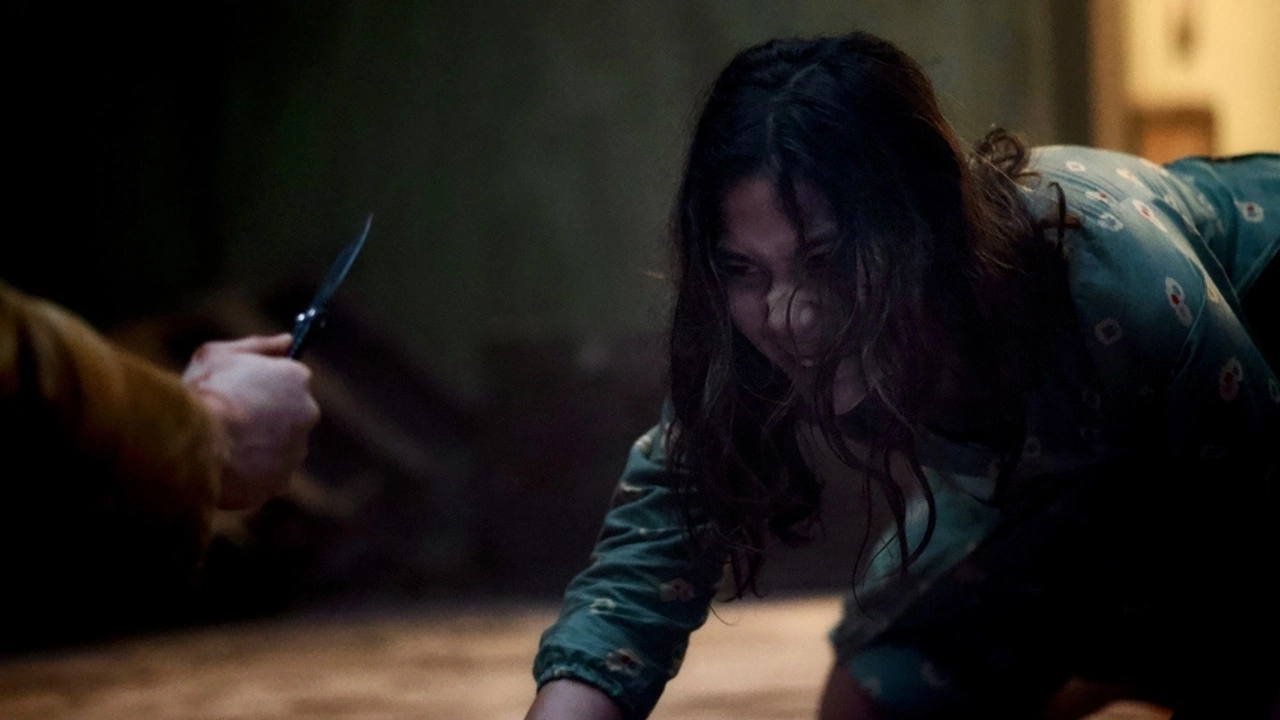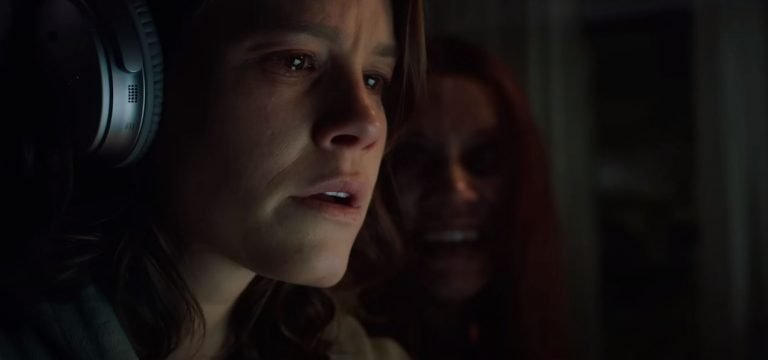Horror and shamanism go back a long way. Their linkages are perhaps as old as time itself. It’s almost an inextricable relationship, one feeding off the other for highly elevated, bizarre narratives combining dread, suspense, and unpredictability. There’s also a profusion of black magic. Rituals are integral, but their specifics are rarely waded into any film that opts to take the shaman angle. It’s an easy bait. There are many implications, and they are largely brushed under the carpet. Charles Gozali’s “The Devil’s Lair” (Original title: Pemukiman Setan) is an Indonesian horror that trades in a lot of cliches and doesn’t really provoke any new inquiry.
It’s like one of those super-tacky films ridden with stereotypes, even though it purports to flash rooted indigenous myths. But the setting and exposition are so vague and sketchy that any of it barely rings with any authentic zest when things start connecting. It is a massive squandering of opportunity, albeit the writing shows no sign of promise at any given point. The narrative is too confident to bask in grotesqueness and taps into a backstory with the most hurried inelegance. It is ridiculous because the characters rarely make any sense. Intelligence is sorely missing, and so the logic driving the events threatens to run empty frequently. We cannot invest in the characters. The use of shamanism is dated and contrived, and any psychological underpinning is wholly absent.
The Devil’s Lair (Pemukiman Setan, 2024) Plot Summary & Movie Synopsis:
One can understand why the film may not prefer to indulge deep into the rituals themselves. Of course, to ground them soundly, one needs to have done proper preparation. Clearly, the makers here don’t seem to have had time for that, leading to the film being the most generic muddle. The film opens with a scene from the Javan past. It’s nighttime in a village. A witch is getting sentenced to death. Sitarasmi Paratrika is furious at her circumstances. She roars at how she was the one who had steered the village through many bouts of misery and lifted it into a state of repair. How much of it is true is laid open to speculation.
What her crime is and why she is being targeted at that moment are also not disclosed in great detail. But she is beheaded. She curses the royal who ordered her killing, declaring a curse that will come into effect within a century. She tells him he may think he has managed to uproot her, but she will continue to linger in spirit. Her spiritual entity, ‘ wrejit,’ will haunt for years to come. Her annihilation and those who seem to believe in it are all but a pipe dream. Nothing can halt her grip on power.
The film takes place many years into the future, picking up from the perspective of Alin ( Maudy Effrosina). She has a hard-scrabble life trying to decently raise her brother after her deceased father’s bundle of debts lands her in big trouble. The loan sharks are all at her back, so she teams up with a group of small-time thieves, her neighbor Gani, and his friend Fit. Moreover, they are planning to rob a house to fund their friend Zia’s heart surgery.

When they reach the house, there’s a car parked, but they are told by their source that the house is unoccupied. Alin has visions of what can happen if they choose to get inside the house. She is alarmed but proceeds since she needs the money. They stumble across a ritualistic arrangement with a girl all tied up. By this point, everyone has already been experiencing strange visions. Yet Gani frees the girl. She is the devil incarnate, and her liberation triggers a bloody spate of blood magic, effected through devious worms acting as a medium.
Things go haywire pretty quickly. It becomes a scene of no release. The worms unleash themselves all over the group. Their loose clutch engenders a fit of derangement, setting into motion murderous desperation. The doors are all barricaded, preventing any scope of exit. The girl, Sukma, is clearly possessed and takes control, engineering a series of hallucinations and complete chaos. In fact, she is wholly unhinged and seems almost unvanquishable. Fit ends up killing himself while struggling to stab the worms. Suddenly, a man called Urip turns up to help Gani and Alin.
He explains that Sukma’s family was trying to revive the old shaman spirit, and he, a descendant of the royal family tasked to end evil wrongdoing, had intervened to quell the plan. Since Gani had freed her, it undoes all his efforts. By the final section of the film, everyone besides Alin is dead. Gani tells her to escape. He is dying. Alin is initially resistant but ultimately decides to listen to him. She knows she has her own brother to look after. She cannot afford to be swept up by emotion at abandoning him, especially when he has no chance of living anymore.
The Devil’s Lair (Pemukiman Setan, 2024) Movie Ending Explained:
Has Alin Conquered the Curse
She barrels out of the house and storms the van through the gates. Sukma is waiting for her. The two get into a duel. Alin, however, is more than equal to the fight. She has a knife she sourced from the house. Wielding it with fearsome dexterity, she puts up a mean fight and finally manages to chop off Sukma’s head. Whether that actually ends the long curse is left to ambiguity. Returning home, Alin settles the loan with those who have been haggling with her. It turns out Urip isn’t gone.
Like a specter, he materializes out of thin air, advising Alin to take good care of the knife. She cannot just use it for any other occasion. It is a powerful weapon. Alin must be wary of what she can do with the knife. The knife has chosen her. It has tremendous might. Yes, she will have to make certain sacrifices, but Alin has proved herself to be abundantly skilled in using the knife for any future crisis.





![The Father’s Shadow [2019]: ‘Fantasia’ Review – The Horrors of Unresolved Grief](https://79468c92.delivery.rocketcdn.me/wp-content/uploads/2019/07/The-Fathers-Shadow-highonfilms-768x509.jpg)


